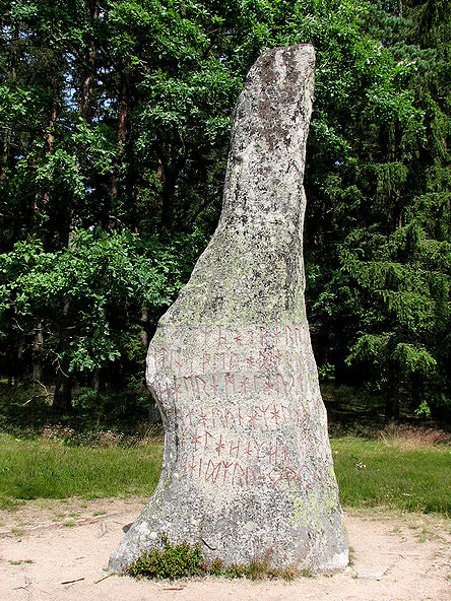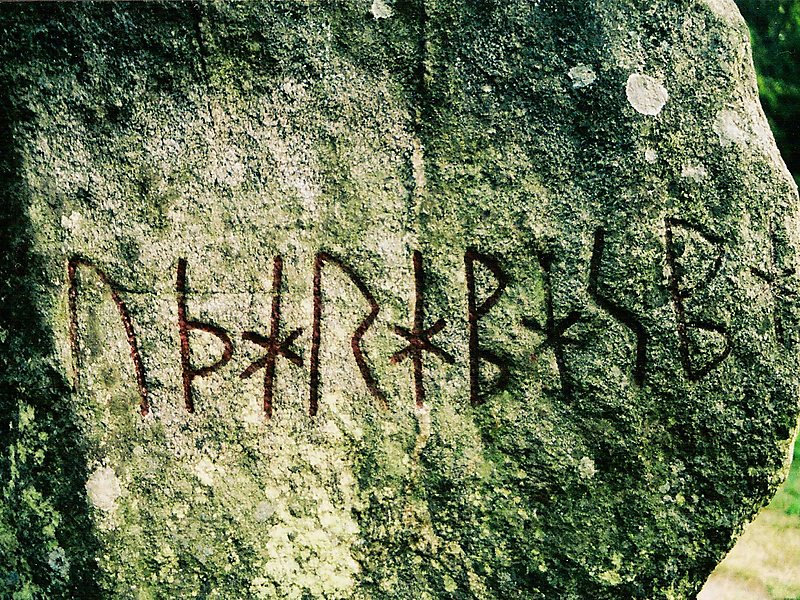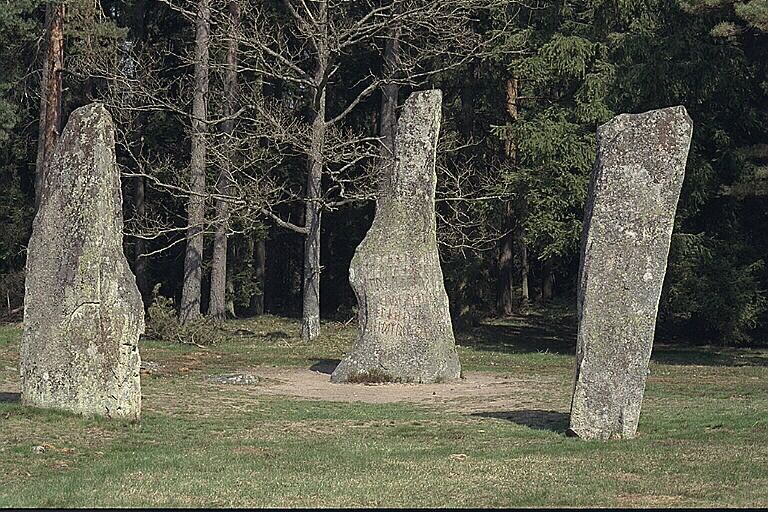Reading Rune Stone: What is on the Björketorp Runestone?
Runes were the alphabetic system of the Vikings in the past. However, the Vikings didn't commonly use runes for the communicative purpose between people and people. Rather, they used runes as a tool to communicate with their gods. One of the main sources that we have the information about runes is from the runestone. Thanks for the Vikings carving their runes onto materials like stone, we have something to look back at the age of the Vikings. One of the runestones surrounded by mysteries is Björketorp Runestone.

Björketorp Runestone on one side
The Björketorp Runestone currently rests in Blekinge, Swede. It is a part of the grave field including some standing stones that form a circle.
It is among the tallest runestones in the world, measuring 4.2 meters (~13.7ft) in height. The Björketorp Runestone is the only stone that has rune inscription on it.
The runes were carved in Proto Norse language around 6th or 7th century. This language might have been in use from the 2nd to 8th century. Also, it might have been the foundation for the Old Norse language. There are two sides with the rune inscriptions on this stone. One side consists of a shorter line reading "I predict perdition".

"I predict perdition"
The other side with inscription evokes many controversies though. The message from the other side of the runestone reads:
This can be translated into:Haidz runo runu, falh'k hedra ginnarunaz. Argiu hermalausz, ... weladauþe, saz þat brytz. Uþarba spa.
I, master of the runes(?) conceal here runes of power. Incessantly (plagued by) maleficence, (doomed to) insidious death (is) he who breaks this (monument).
I prophesy the destruction/prophecy of destruction.

While some runestones contain the names of the tribe, the Björketorp Runestone lacks the name of the creators. The scholars have been in dispute about the purpose of the runestone. But the major theory is that the runestone is erected as a grave and a kind of curse is carved onto to protect it.




